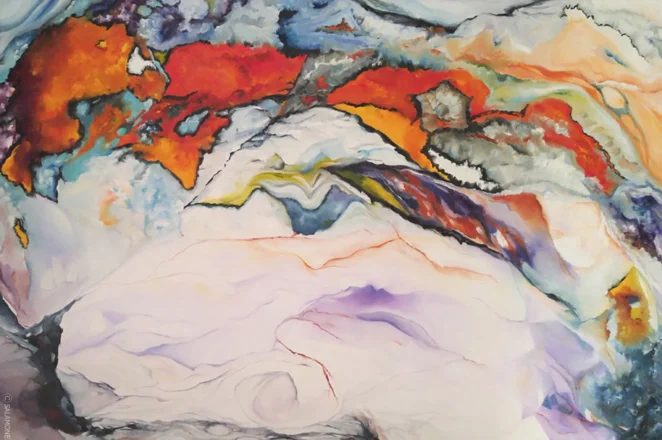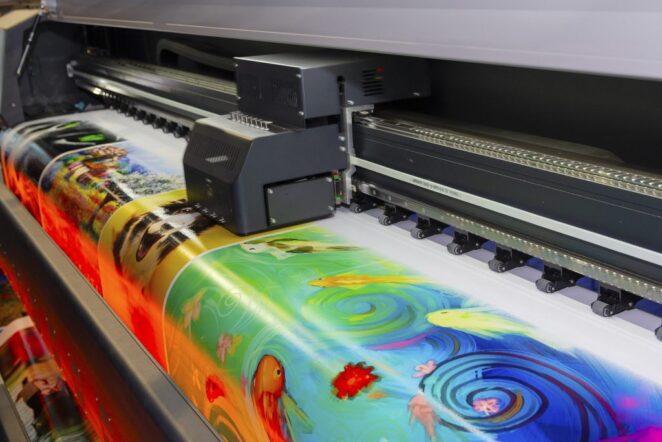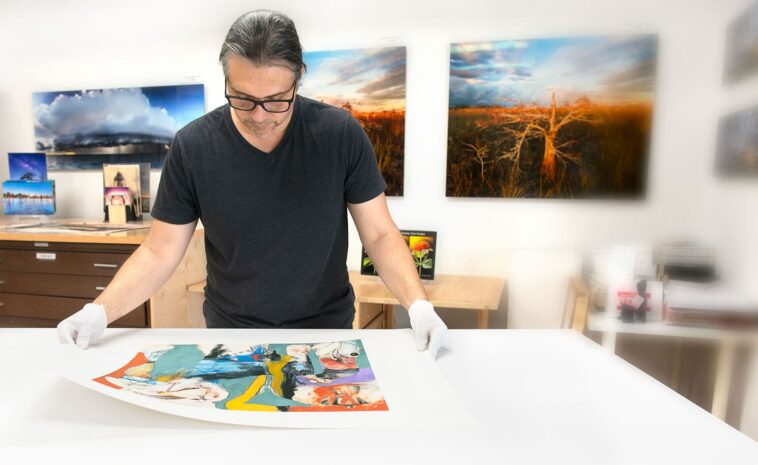Art has always been a medium for expressing creativity, capturing moments in time, and inspiring emotions. Traditional methods such as lithography and screen printing were the primary means of reproducing artworks for centuries. On the other side, the 20th century has brought advancements in many areas, and printing is one of them.
That is when the Giclee model was invented, and the main benefit of it is the higher quality. The impact on the art world cannot be overstated. The appearance of Giclee Prints represents a revolutionary technique that has democratized access to art, enabling artists to share their creations with a global audience at an affordable cost. We will analyze more on this topic in the following article.
Main Features
As we already mentioned, it is a revolutionary technique in art reproduction that has transformed how artists share their works with the public. This innovative method utilizes high-resolution inkjet printers to create stunningly accurate results that faithfully capture the essence and intricacies of the original artwork.
By using advanced digital technology and wide-format inkjet, artists can now produce with exceptional precision and color accuracy, elevating the quality of art reproductions to unprecedented levels. As a result, it has become synonymous with preserving the beauty and integrity of artworks, allowing artists to extend their creative vision beyond the confines of the original piece.
First Years Upon Introduction

During the 1980s, digital printmakers embarked on a quest to enhance the quality of art reproductions. These pioneers recognized the potential of inkjet as a medium to accurately replicate the nuances of color, tone, and texture in artworks. Through their tireless experimentation, they unlocked new possibilities in art printing.
Armed with archival-pigmented inks and cutting-edge inkjet technology, they paved the way for a transformative shift in the art world. These early experiments laid the foundation for what would become a significant milestone in the history of art, forever changing the way artists, collectors, and art enthusiasts engage with and appreciate fine art.
The advent of digital technology and the development of wide-format inkjet printers played a pivotal role in the evolution of art printing. These technological advancements gave artists a powerful tool to reproduce their works with remarkable precision and detail. The high-resolution capabilities of inkjet printers allowed for accurately capturing colors, textures, and subtle nuances, resulting in prints that closely resemble the original artwork.
Main Benefits
It has brought many benefits for artists seeking to reproduce and share their artworks. The precise nature of this technique allows artists to maintain the integrity and authenticity of their original creations. The ability to replicate colors, textures, and intricate details ensures that the essence of the artwork is faithfully captured in each photo.
The high-quality inks and acid-free papers also ensure their longevity, preserving their vibrancy and quality over time. That not only enables artists to expand their reach and make their works accessible to a wider audience but also offers them a valuable revenue stream through the sale of limited edition prints.
Moreover, it has revolutionized the art collecting experience, offering numerous advantages to collectors and enthusiasts. Furthermore, it has made art more accessible to a broader audience by offering affordable alternatives to original works. Collectors can now acquire a limited edition of their favorite artists’ works, bringing the allure of fine art into their homes and personal spaces.
Huge Impact On Art

The introduction of this method has profoundly impacted the art world, transforming how art is reproduced, exhibited, and appreciated. Galleries and museums have embraced this technique to display and preserve valuable artworks, minimizing the risks of handling delicate originals. Established and emerging artists have found a new medium to share their creativity and expand their reach to a global audience.
The availability of high-quality reproductions has democratized access to art, allowing art enthusiasts to appreciate and collect works that were once exclusive to elite circles. Moreover, the popularity of limited edition pictures has opened up new avenues for art commerce, providing artists with additional revenue streams and allowing collectors to own exclusive pieces of art. It has truly revolutionized the art world, bridging the gap between artists and enthusiasts and fostering a deeper appreciation for the beauty and significance of art.
In contemporary art practices, printing has become an integral part of artistic expression. Artists are now actively exploring the creative possibilities offered by Giclee printing, pushing the boundaries of the medium. They are experimenting with new techniques, incorporating digital elements, and combining various artistic disciplines to create unique and captivating results. As a result, Giclee printing has become a versatile tool that allows artists to translate their vision into tangible and reproducible forms, fostering innovation and experimentation in the art world.
What to Expect in the Future?
As technology continues to advance, the future of printing in the art world holds great promise. The ongoing development of inkjet printers, inks, and substrates will further enhance art prints’ quality, precision, and longevity. Artists will continue to embrace printing to extend their artistic reach and share their creations with a global audience.
Moreover, advancements in digital imaging and 3D printing may open new frontiers for artistic expression, allowing for the creation of three-dimensional printed artworks that redefine traditional notions of art forms.
Interacting printing technologies with augmented and virtual reality could also transform how art is experienced, immersing viewers in interactive and dynamic artistic environments. The future of printing in the art world is brimming with possibilities. It is exciting to witness the ever-evolving relationship between technology, creativity, and the visual arts.

The Bottom Line
As you can see, there are many reasons why this form of printing is so important for art and many other areas. First of all, it made it easier to create a high-quality photo. Also, it helps museums and galleries store valuable pieces and save them from damage by showcasing copies you cannot even resemble from the original. It will remain the most common technique in the future, and file:///C:/Users/oki/Downloads/55916405.pdf and AR will make it even more attractive.




